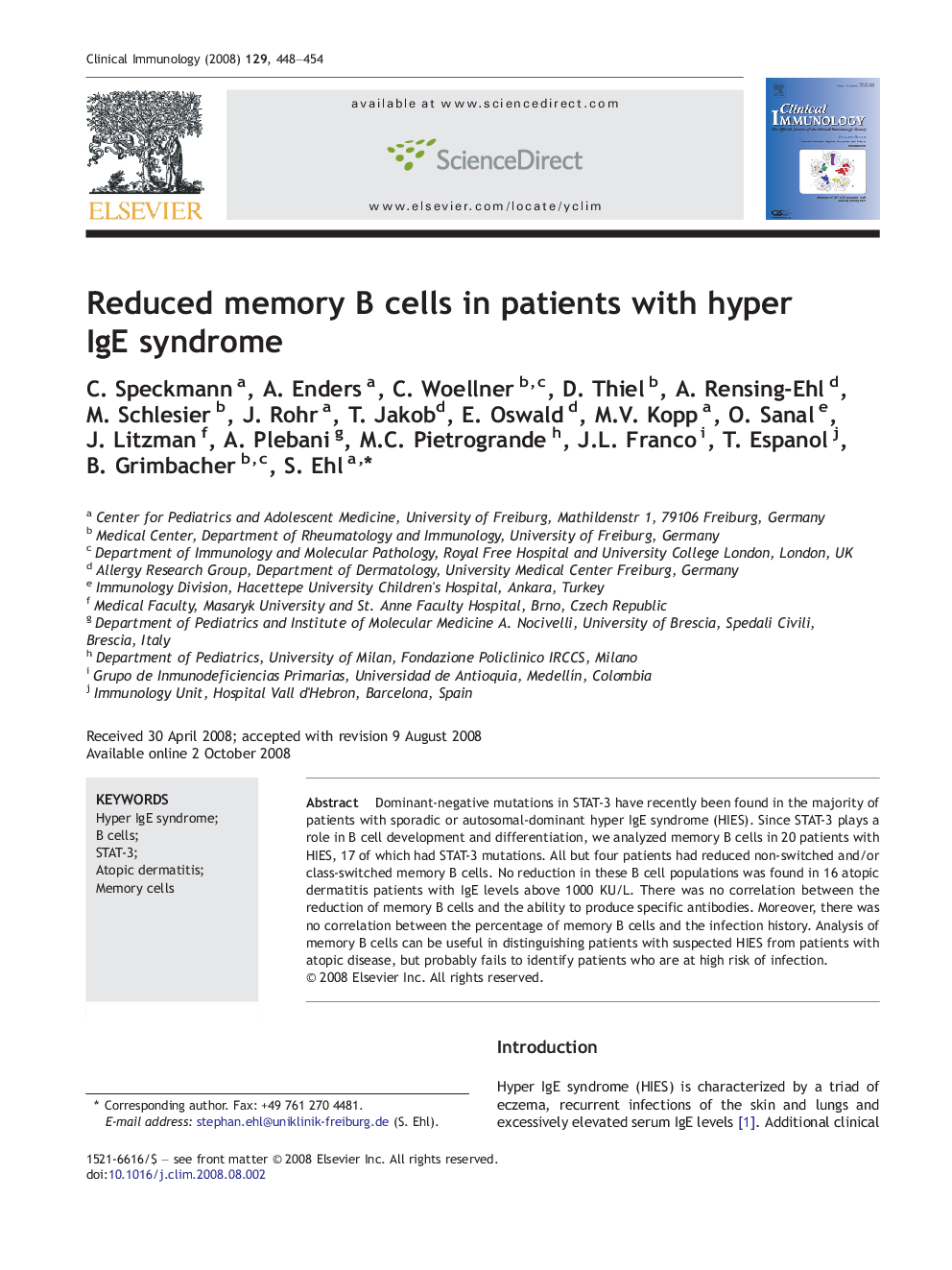| Article ID | Journal | Published Year | Pages | File Type |
|---|---|---|---|---|
| 3258215 | Clinical Immunology | 2008 | 7 Pages |
Dominant-negative mutations in STAT-3 have recently been found in the majority of patients with sporadic or autosomal-dominant hyper IgE syndrome (HIES). Since STAT-3 plays a role in B cell development and differentiation, we analyzed memory B cells in 20 patients with HIES, 17 of which had STAT-3 mutations. All but four patients had reduced non-switched and/or class-switched memory B cells. No reduction in these B cell populations was found in 16 atopic dermatitis patients with IgE levels above 1000 KU/L. There was no correlation between the reduction of memory B cells and the ability to produce specific antibodies. Moreover, there was no correlation between the percentage of memory B cells and the infection history. Analysis of memory B cells can be useful in distinguishing patients with suspected HIES from patients with atopic disease, but probably fails to identify patients who are at high risk of infection.
